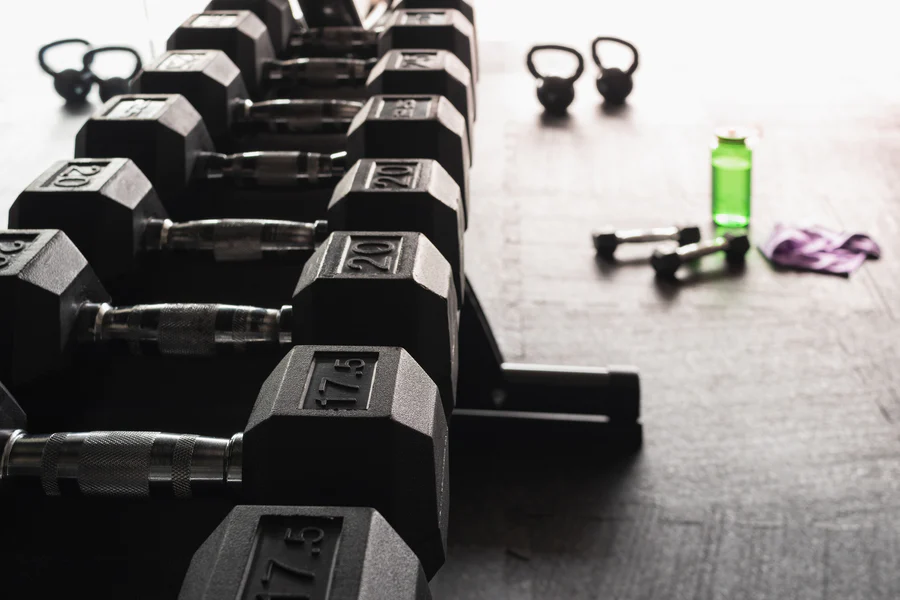In my last article, I made the statement that exercise alone is a poor choice if your main goal is to shed fat and lose weight and that aerobic exercise was specifically unimpressive in this department.
Today I would like to discuss a better way.
If aerobic exercise or “doing cardio” is not the best way to burn fat and lose weight, then what is? I bet you think I’m going to say some type of strength/resistance training. If so, there would be some truth to that statement, but there is something that is more important.
DIET.
There it is, that dreaded four-letter word. I hate to do this to you, but it’s true. Let’s go to what the science says.
Foster-Schubert et al. looked at 439 obese women over a one-year period (mean age of 58, and 47% fat) and broke them into 1 of 4 groups: diet-only, exercise-only, diet plus exercise, and a control group. Here were their findings in average weight loss percentage:
- Diet-only – 8.5%
- Exercise-only – 2.4%
- Diet plus exercise – 10.8%
- Control – 0.8%
As you can see, most of the results were obtained by just eating better. Add in some exercise and the magic starts to happen. I believe the diet plus exercise numbers could have been even better had they used a better exercise protocol – they used an aerobic exercise-only program, which you now know doesn’t exactly yield the best results. Effect of Diet and Exercise, Alone or Combined, on Weight and Body Composition in Overweight to Obese Postmenopausal Women. Obesity, 2011.
From personal experience with a wide range of clientele, I can attest to these results. I’m going to generalize here, but if you’re over the age of 27 and trying to lose a significant amount of fat and weight through exercise alone without much attention to diet – you’re probably going to struggle.
I don’t want to go off on a tangent and turn this into a nutrition piece, but its importance cannot be overstated and I just want to make sure that you understand this. I’ve said it before and I’m going to say it again – you simply can’t out-train a poor diet.
So from an exercise perspective, what is the best way to burn fat and lose weight? The answer is, it’s a combination of resistance training and interval training. Let’s take a look at some of this research.
Hunter et al. assigned subjects to one of three groups: diet-only, diet plus aerobic exercise, and diet plus resistance training and found that all groups lost similar amounts of weight. However, only the resistance training group maintained their lean body mass (muscle) and resting energy expenditure (metabolism). Resistance Training Conserves Fat-Free Mass and Resting Energy Expenditure Following Weight Loss. Obesity, 2008.
In another study, Kramer, Volek et al. (1999) assigned overweight subjects to one of three groups: diet-only, diet plus aerobic exercise, and diet plus aerobic exercise plus weights. The researchers found that the diet-only group lost 14.6 pounds of fat in 12 weeks – a very successful result by any standards.
The diet plus aerobic group lost only ONE more pound (15.6 lbs.) than the diet-only group. If you’re curious, training was 3 times a week starting at 30 minutes and progressing to 50 minutes over the 12 weeks. In my opinion, a lot of extra exercise for just one more pound of weight loss.
Last but not least, the diet plus aerobic plus weight training group lost 21.1 pounds of fat, which was 44% and 35% more than the diet-only and diet plus aerobic groups, respectively. Influence of Exercise Training on Physiological and Performance Changes With Weight Loss in Men. Medicine and Science in Sports and Exercise, 1999.
It’s important to keep in mind this was actual fat lost, not fat combined with muscle as is often the result of aerobic-only training programs.
For example, if you take two individuals who both weigh 100 pounds and have the same starting body fat and muscle percentage and at the end of a training cycle now each weigh 90 pounds but one lost 5 pounds of muscle while the other didn’t – the individual who lost the 5 pounds of muscle actually got fatter. Instead of losing 100% fat, they lost 50% fat and 50% muscle. In other words, their body fat percentage just increased.
Let me give you one more research study that illustrates this last point more clearly.
Bryner et al. researched two groups – an aerobic training group that trained 4 hours per week, and a resistance training group that did 10 different exercises consisting of 2-4 sets of 8-15 repetitions, three times per week for 12 weeks. Here were the results:
- VO2 max (how well you process and utilize oxygen) increased equally in both groups.
- The aerobic training group lost 27 pounds of fat and 10 pounds of muscle.
- The resistance training group lost 32 pounds of fat and NO muscle.
- The aerobic training group reduced metabolism by 210 calories per day.
- The resistance training group increased their metabolism by 65 calories per day.
Effects of Resistance vs. Aerobic Training Combined with an 800 Calorie Liquid Diet on Lean Body Mass and Resting Metabolic Rate. Journal of American College Nutrition, 1999.
I hope you’re beginning to see the significance here if losing fat and weight is important to you. Muscle is kind of like the holy grail of fat loss. The more you have and can maintain, the easier it will be to lose and keep excess fat off your body.
Also, note that this research took place a relatively long time ago – some of it over 20 years ago. The point that I’m trying to make is that we’ve known this stuff for a long time, but it still doesn’t seem to be common knowledge yet.
Now that you have an idea of the importance of resistance training, I’d like to go over the role that interval training has in this process. However, I feel like I just threw enough numbers, statistics, and information at you all at once and don’t want to lose you – so we’ll dive into the interval training portion of it next time.

